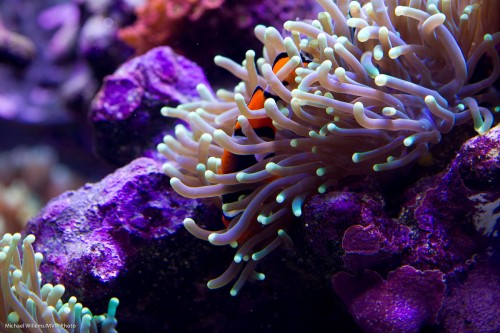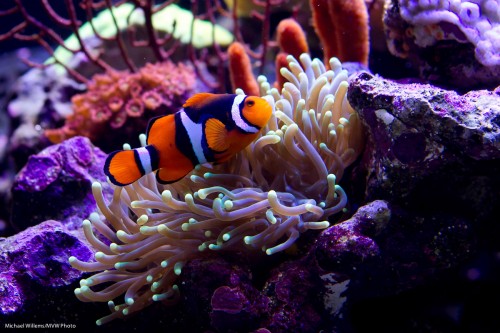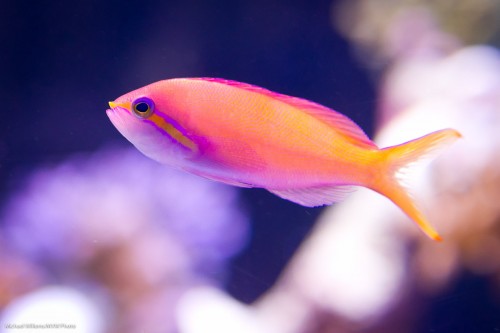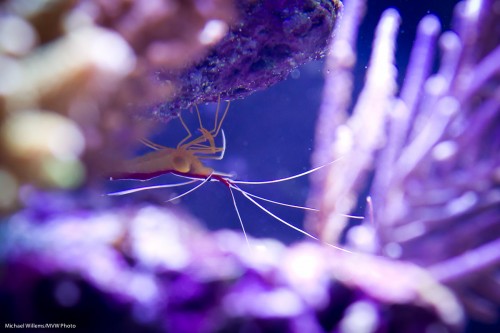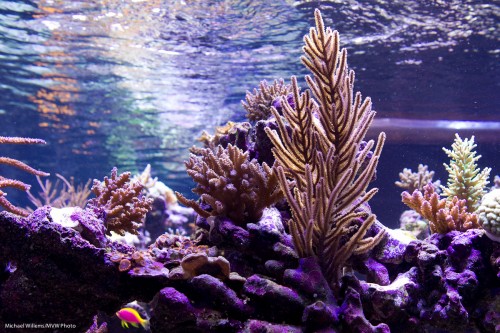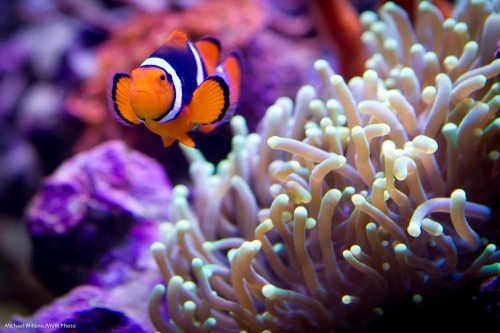Found him:
He was hiding in these coral polyps. Which is, I understand, exactly what these fish do.
Today, in other words, some more aquarium shooting, and a few more tips on the same.
This time, on the camera settings:
- Lens: I used a 24-70mm lens set to 70mm for most shots. On a 1.3 crop camera this gave me 90mm effective length. A 100mm macro lens would have done nicely, too.
- Exposure mode: The mode to use is manual (although you could use program or aperture mode, since an aquarium probably does not vary all that much).
- ISO: I shot at 800 ISO, which was a nice compromise between quality and speed.
- Shutter speed and aperture: I used a shutter speed around 1/200th second and an aperture of f/5.6. At the chosen ISO of 800, this gave me a meter reading slightly below zero, and hence, well exposed pictures. An aquarium can be fairly bright, which is a good thing. The setting of f/5.6 (or f/4 in some images) gives me some depth of field, and 1/200th second gives me the ability to somewhat freeze motion.
- Focus area: I set the focus area to one focus spot, and pointed that point at the main interest point in the picture – the fish’s eye.
- Focus mode: I set the focus mode to AI Servo (AF-C for Nikon users). That way you can shoot moving objects.
- Drive mode: I set the drive mode to continuous.
- White balance: I used “Daylight”, since this aquarium was lit by sunlight-type light. Failing that, use “Auto” white balance.
Now that we are all set up, we shoot. A lot.
A few more tips:
- We try to get as close to the glass as we can. This minimizes the imperfections of the glass.
- The glass, of course, is clean.
- Room light is dimmed as much as possible.
- We may want to stabilize the camera e.g. with a monopod.
- Avoid picturing too many artificial things (equipment) if you can.
- Shooting perpendicular to the glass (see previous post on aquariums), since this preserves quality and minimizes the need to do any post-processing.
Remember that when using AI-Servo (AF-C) to shoot moving objects (or fish), you will be lucky if one third of your pictures are razor sharp even when you are experienced and have everything going for you. If you get one in ten extremely sharp, be happy.
At the same time – do not be too critical. If you print at 5×7 or even 8×10, you will not notice a slight blurriness.
Nemo’s friend:
Prawn pregnancy:
Nice reflections on top:
And finally, one more shot of our friend little Nemo:
Next week, a few more tips on photographing aquariums. In the mean time, if you have access to an aquarium, be prepared to spend a lot of time coming up with great shots. It’s worth it – an aquarium is a truly fascinating place, where nothing is ever the same.

